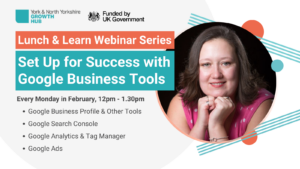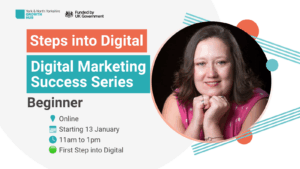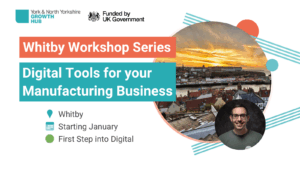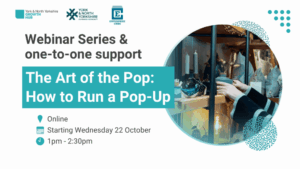
Who are your customers?
–
Understanding your target audience is a fundamental step in building a successful business. Your target audience represents the individuals or groups most likely to be interested in your products or services. By identifying and catering to the needs and preferences of this audience, you can make the most of your marketing activities and ultimately increase your chances of success. Below are some key steps to get you started with the process of identifying your likely audience or customers for your business.
–

–
Market research
Market research is the starting point of identifying your target audience. It involves gathering data and insights about your industry, competitors, and potential customers. Here are some key steps in conducting effective market research:
- Competitor analysis: Study your competitors to understand who their customers are and what methods they use to attract them. Depending on your industry, there will be a variety of information available about the general profiles of customers for your type of business. Some of this information will be free, some may need to be paid for.
- Customer surveys: Conduct surveys or interviews with existing customers to gather information about their demographics, preferences, and pain points.
- Demographic data: There are numerous reports available from different agencies. Search for reports about general population information in your market area about information such as age, gender, location, income level, and occupation to segment your potential audience.
- Psychographic data: ‘Psychographic’ refers to the study of people’s wants, needs and behaviours. This information can include factors like lifestyle, values, and interests, which will help you gain deeper insights into your audience’s motivations and decision-making processes.
- Market trends: Stay updated on industry trends, consumer behaviour changes, economic and policy shifts, and emerging markets that may affect your target audience.
Remember, your business doesn’t stand still, and neither will the market or your audience. Repeat this activity on an annual basis to see how your customer base is evolving and how their needs are changing.
Create customer personas
Once you’ve collected data from your market research, use this information to create detailed customer personas. Personas are fictional, generalised profiles of your customer groups. Each persona should include demographic details, as well as their likely wants and needs, and the challenges that your product or service can address. Creating these personas helps you personalise your marketing efforts and tailor your messaging to resonate with your target audience.
Look at your current customer base
If you have an existing customer base, spend some time looking in to what you know about them to identify common characteristics – particularly among your best customers. Look for patterns in demographics, buying behaviour, and customer feedback. Your current customers can provide valuable insights into the type of audience your business attracts and serves well.
Use your social media insights
Social media platforms offer robust insights and analytics tools that can help you understand your audience better. Explore these tools to gather data on the demographics, interests, and behaviours of your social media followers, including what content they have strongly engaged with. This information can help refine your target audience and inform your content strategy.
Conduct focus groups and surveys
Consider conducting focus groups, either face-to-face or online, or, if that isn’t possible, online surveys to gather direct feedback from potential customers. These can provide valuable qualitative insights and allow you to refine your understanding of your target audience.
Test and refine
Identifying your target audience is an ongoing process. As your business evolves and grows, so may your audience. Continuously test and refine your audience segmentation based on new data and feedback. Be open to adjusting your marketing strategies to better serve the evolving needs of your target audience.

Learn more
Find out how to monitor the effectiveness of your marketing activities
See more about how you can retain your customers
–

–
Articles
Set Up for Success with Google Business Tools: Lunch & Learn Webinar Series
This series will explore the free tools available from Google to help small businesses increase their online presence. Plus, you’ll learn how to leverage Google’s paid advertising platform for scalable growth without feeling like you are just wasting money. Participants will leave feeling confident to start using Google Tools to Improve their visibility, generate leads and make more sales online.
Fuel your business growth through great marketing, communications & branding
Every business needs a voice. Discover how powerful marketing, clear communications and a strong brand can transform your business. Join this webinar series to learn practical strategies that attract customers, build trust, and drive growth.
Smartphone Video Masterclass: One-day Workshops
The Smartphone Video Masterclass is back by popular demand, coming to Scarborough, Ingleton, Stokesley, Malton, York and Selby. Join our one-day hands-on video workshop designed to help businesses of all types and sizes take their first confident steps into video marketing.
Events
31st December 20259:30 am - 12:15 pmFREE
[FULL] Export Roadshow: Harrogate
This roadshow is a great opportunity to network with other businesses looking to grow and ask questions of the experts. It will provide you with helpful advice, routes for support beyond the event, including the UK Export Academy, and information about other funding opportunities.
13th January 202610:00 am - 1:00 pmFREE
Online Workshops: Digital Marketing Success Series (Beginner)
Each workshop is packed with real-world examples, guided how-to sessions, and space to ask questions and get feedback so you can apply what you are learning to your own business and individual needs. All delivered online so you can attend without having to travel, perfect for rural and coastal businesses across North Yorkshire.
13th January 202610:00 am - 12:00 pmFREE
Whitby Workshop Series: Digital Tools for your Manufacturing Business
This engaging workshop series delivered by Hello Technology is designed to help manufacturing businesses harness the power of digital tools to improve their digital systems, record keeping, data management and marketing. Participants will be led through 5 focussed sessions, with each workshop blending expert-led guidance with practical exercises. Attendees will have the opportunity to apply new strategies and concepts directly to their business. With a mix of group learning and tailored support participants will leave with a clear digital roadmap, increased confidence and actionable insights to drive long-term success in their manufacturing business.
Resources
Webinar Recording: Autumn Budget 2025, how will it impact your business?
The Autumn Budget, announced on 26 November 2025, introduced a range of changes that business owners need to be aware of. From updates to taxation and compliance rules, to adjustments in incentives and support schemes. These measures could affect how you plan and operate in the year ahead. To help you understand what’s changing and what it means for your business, we’re hosting a webinar that breaks down the key points in a clear and practical way.
Webinar Recording: 🟡 Data Protection in practice
In this engaging and practical webinar series, Privacy Protect Group Ltd will guide you through everything you need to know to build a confident, compliant, and resilient approach to data protection in your business. Whether you're just starting out or looking to refine your practices, each session is designed to build your understanding step-by-step.
Webinar Series: How to Run a Pop-Up
From pop-up department stores to kitchen takeovers, cool things are popping up and popping off everywhere. In this exciting project, you’ll get to meet some of the teams behind these pop-ups and get their top tips for running a great pop-up.









